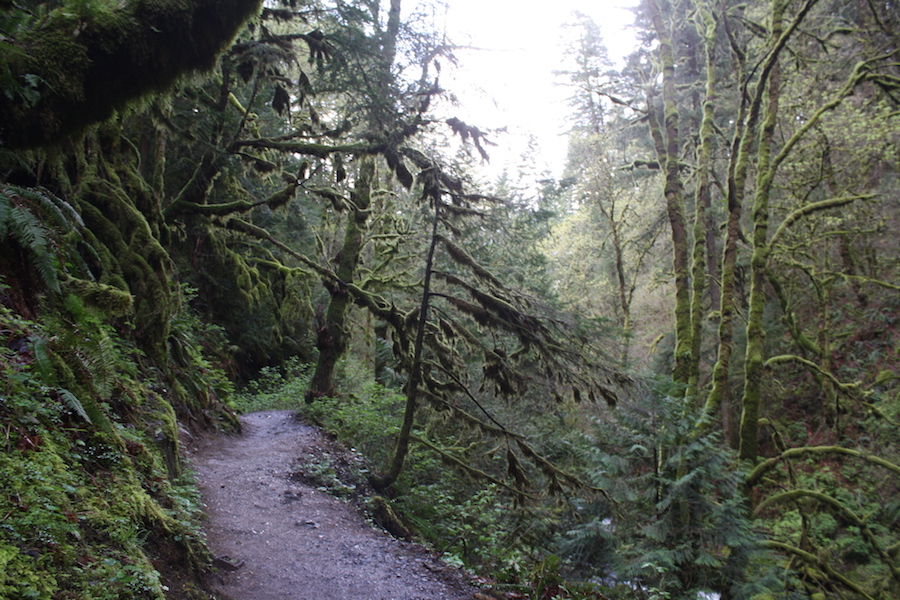
Why bad stories are so good
 I wanted a word that describes a story that’s so bad it’s good. I can think of stories from my own life that fit this definition. But words shape our understanding of the world. If a certain word doesn’t exist, how can the idea exist?
I wanted a word that describes a story that’s so bad it’s good. I can think of stories from my own life that fit this definition. But words shape our understanding of the world. If a certain word doesn’t exist, how can the idea exist?
I noted a few words that were similar to the word that I was looking for. In France, they have “nanar,” or “a film so badly realized and ridiculous that it becomes involuntarily amusing and comical.” Think any Arnold Schwarzenegger movie ever made. In Indonesia, they have the word “jayus.” For years, I’ve carried the particular definition of “a joke so poorly told and so unfunny that one cannot help but laugh,” which I think comes from a book called “Interpersonal Communication.” But I’ve yet to find a name for the type of stories I’m talking about. So, I call them joywhoppers.
When you’re a sophomore in high school and someone at youth group tells you that you have a bean stuck in your braces, that’s a joywhopper. When your uncle gets drunk at a Chinese buffet and uses the crab legs to impersonate Freddy Krueger, that’s a joywhopper.
They’re not just embarrassing stories or bad memories, though. They are the way we frame our own narratives, and they demonstrate the power of storytelling.
They make up for all the real, bad stories about pain and loss. They make us laugh in spite of ourselves, and they make crappy days seem tolerable, or even good, in retrospect. They’re the stories we tell, the ones we rewrite again and again.
I have a favorite. It’s about a hike.
We’re in my 1990 Toyota Celica. It’s small and low to the ground. There’s no AC and no radio. My brother Scottie, my husband Stephen and I are on our way to Briones Regional Park for a day hike. This hike will be the last hike we take together, before my brother leaves for basic training in Fort Sill, Okla.
As we pull into the parking lot at Briones, Scottie points to a sign: Gate locks at sunset.
“We have to be back to the car by sunset,” says Stephen. “Can we do it?”
On the GPS, Briones Reservoir is shaped like a sea monkey with little arms and legs that stick out from the main body of water. We’re going to hike around the sea monkey — 13.5 miles. We’re starting at noon, and, if the gate locks at sunset, we have six hours to make it around the loop and back to the car. We’ll have to hike 20-minute miles, on a route rated as “hard,” in the sleeting rain.
“We can do it,” I say, and Scottie agrees.
The rain outside feels colder and harder than it looked from inside the car. We open the Toyota trunk to grab our backpacks and hiking poles. We pull on and zip up our jackets.
Stephen’s the first to be ready, as always. He’s tall and slender, and he steps in wide strides.
“You guys ready yet?” he asks from the trailhead with his arms posturing the question. The drawstring on his windbreaker is pulled tight around his face, covering his shaved head and short beard. His blue eyes stand out against the bleak landscape.
Scottie has on a ski mask, a U.S. Army backpack, hiking pants, a windbreaker and a pair of tall, lace-up, hand-me-down work boots from my stepdad.
“You look ridiculous,” I tell him.
“I don’t care. I’m warm,” he says through the fabric.
Underneath his mask, he has a band of freckles across his nose and a mop of auburn hair that will be gone in a week. He’s athletic and strong but a small guy, which I like to tease him about.
At the trailhead, there aren’t any maps — typical for a regional park — and we realize we’ll have to rely on GPS. A service truck lumbers along the fire road. The landscape is a dishwater color above, squelchy mud below.
We walk for 10 minutes and the skin on my arms starts to show through the sleeves of my yellow windbreaker. My non-waterproof boots are soaked. Stephen takes out a new iPhone from his pocket and reads the trail GPS, covering the screen to protect it from the rain while we debate about the hike’s possible outcomes.
“I don’t want to be stuck out here past sundown,” Stephen says.
“What would we do?” I ask.
“We could always sleep in the car, I guess,” he says.
“I’m not sleeping in the frigging car,” Scottie says, which makes me laugh because Scottie’s small, but my back seat is smaller.
We make our way through the mud, glad that we brought our hiking poles because, for every step we take, we slide a little downhill. Half an hour into our hike, my brother stops to check his boot. He thinks he’s getting a blister, and he’s worried that when he goes back for his final physical fitness test, he’ll fail.
“Guys have failed for dumber stuff,” he says. He reaches down and takes off his boot, deciding that he will hike without it.
I should feel bad for my brother, walking through the mud and the rain with one shoe. But I can’t help but laugh. I walk behind him, so I can laugh better.
For every step he takes with his right foot, his boot sticks and leaves a heavy print. For every step he takes with his left foot, his sock swipes the mud and his leg almost slides out from under him. We have over 12 miles to go.
We lose the GPS signal and, without a map, we can’t tell whether we’re still on the right trail. It’s a bad combo. We dead-end at a gate with a black and orange no-trespassing sign.
We check and double-check the GPS. We look back the direction we came. For what? To see if it was the right way. I wonder how many legs the sea monkey has.
We debate going back or moving forward.
“I don’t want to get in trouble for trespassing. I could get court-martialed,” Scottie says.
“Maybe we shouldn’t go. I don’t want him to get in trouble,” I say. This is me: gung-ho until I think I might get in trouble for something. Then I turn into the fat kid from “Stand by Me.”
We hesitate before deciding to move forward. We all slide through the low cattle gate and creep along the trail. It seems no different than the rest of the trail, just wild grass, mud and scrubby oak trees. But we’re afraid of getting caught. Scottie’s afraid, and it’s wearing off on me.
“Scottie. Can you not look like a terrorist?” says Stephen.
I realize my brother is still wearing the ski mask and Army backpack, and now he has one filthy, floppy sock and a boot in his hand.
The sky begins to darken, and we pick up our pace. I give Scottie one of my hiking poles, which helps his balance in the mud. I’m starting to feel bad for him.
Stephen checks where we are on the GPS. He decides we probably won’t make it to the car in time, so he slows his pace. But my brother and I choose to run ahead. Stephen hands me the keys, and Scottie and I begin jogging.
A little while later, I can hear my brother’s feet stomping behind me.
“I can’t believe you can just keep going, Jessie,” he says.
My breaths are like the pregnant women in Lamaze class — at least how I think they look on TV. I’m tired but weightless from the endorphin rush. I want to make it to the car for us. I’m feeling very noble. We round strange corners, and I attempt to navigate using my GPS on my slow iPhone. I have bad service. One moment, the red dot that represents us is on the trail, and the next moment it jumps off the trail and into the bushes.
“I don’t know if this thing is right,” I tell my brother.
We run for 30 minutes, picking up speed going downhill, jumping over tree roots, panting in our wet clothes.
Dusk settles around the sea monkey.
Then we round another switchback and hear, “Hey! Where are you guys going?”
My brother turns to me, wide-eyed, ashen. “What the f—?” he says.
It’s Stephen. We’d taken side paths, led astray by my slow GPS and poor navigational skills, that made our route longer, and now we were running in the wrong direction. Walking, he’d caught up to us. All that work for nothing.
We jog slower through the gloom with Stephen trailing behind us and come to a couple doing minor repairs on their truck in the parking lot of another trailhead. A woman sits on the tailgate, while a man busies himself with a tool at the truck tail light. Stephen asks them for a ride to the car so that he can come back and get us, and the man agrees to take him once he’s done with his task.
“Okay, thank you. Thank you so much. We really appreciate it,” Stephen says, pressing his hands together to show his gratitude.
But the woman on the tailgate leans over and whispers something in the man’s ear.
“No,” he says. “I can’t take you. Maybe next time.”
“What?” says Stephen.
“You’re all dirty,” he says, pointing to Stephen’s muddy pant legs.
“What ‘next time’?” I ask as we shamble along the trail through the afterglow,
our eyes adjusting to the near darkness.
“We have to be getting close,” Stephen says. “We have to almost be there.”
A few minutes later, we catch sight of the parking lot — and then a silver glint. The car!
We did it. We made it.
“What’s the point to this story?” you may ask. “A lot of this story sucked,” you may also say. But that’s it. This hike was so great precisely because it was so terrible. You might say that I just liked the hike because my group bonded or because it contained a few funny anecdotes. I might agree with both of those statements. But I think there’s something special about retelling the story in its many iterations.
Last Christmas, Scottie, Stephen and I sat at my mom’s kitchen table one night and tried to tell the story of our last hike. It was a difficult time for our family. A loved one was very ill. My brother, who was on military leave with his new wife, was only going to be home for a few days. Each of us started from a different part of the hike — the boot, my poor navigational skills, the woman on the tailgate. We interrupted each other, telling all the best parts out of order.
When we tell a story, we revise the details, we exaggerate the speech. We look for symbols and foreshadowing. We notice irony. In the joywhopper, we look for humor where there isn’t any. We find humor in the absurd or the mundane, and we use it to better understand our experiences.
After all, what’s life but one big story that’s so bad it’s good?
Written by: Jess Driver — jmdriver@ucdavis.edu
Disclaimer: The views and opinions expressed by individual columnists belong to the columnists alone and do not necessarily indicate the views and opinions held by The California Aggie.



